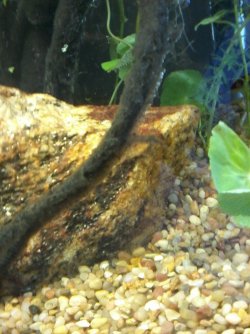I know they gave me chili r asboras because they have the markings of chili r asboras also at the time I bought them there was another tank with exclamation point r asboras in it. Is there a possibility that there aren't enough chili r asboras in my tank and that there too stressed?
Eight is a decent number for this species. I would probably have gone with 12, but 8 is not going to cause them serious stress. Nor should the water if the GH is around 4 dGH as was worked out earlier in this thread. These will be wild caught fish so far as I know, and they need soft or very soft water, so that should not be problematic. What is the pH running now?
There are six (to date I believe) species in
Boraras that may get confused by stores or importers, and common names are frankly useless in identifying species. I have known local stores make up names just to market a species; I always ask for the invoice to see the scientific name (most importers/distributors use scientific names) if I am in doubt. The following excerpt from a profile of these species I authored a few years back may help in identifying.
All six species in this genus have a distinctive colouration and patterning. On a reddish background, in
B. maculatus, B. micros and
B. naevus there are three roundish black/dark brown blotches, one being a shoulder patch that is larger than the eye, a second at the origin of the anal fin, and the third on the caudal peduncle (at the base of the caudal fin). On
B. brigittae and
B. urophthalmoides there is a black/dark brown mid-lateral stripe and the caudal fin base blotch, and on
B. merah there is an elongated blotch of the same colour on the anterior third of the body and then a much narrower mid-lateral line leading to the caudal fin base (Conway & Kottelat, 2011).
In the first phylogenetic analysis of the species in
Boraras, Conway (2005) established the monophyletic lineage of this genus. Dr. Conway noted that the interrelationships of the five
Boraras species remains unresolved, and no evidence was found to suggest that
Boraras and
Trigonostigma are closely related. However, more recent work by Tang, et al (2010) has clarified the phylogeny of the genera in the monophyletic subfamily Danioninae that includes the species within
Rasbora,
Boraras and
Trigonostigma. Monophyletic means that all species are descended from a single common ancestor included within that clade.




